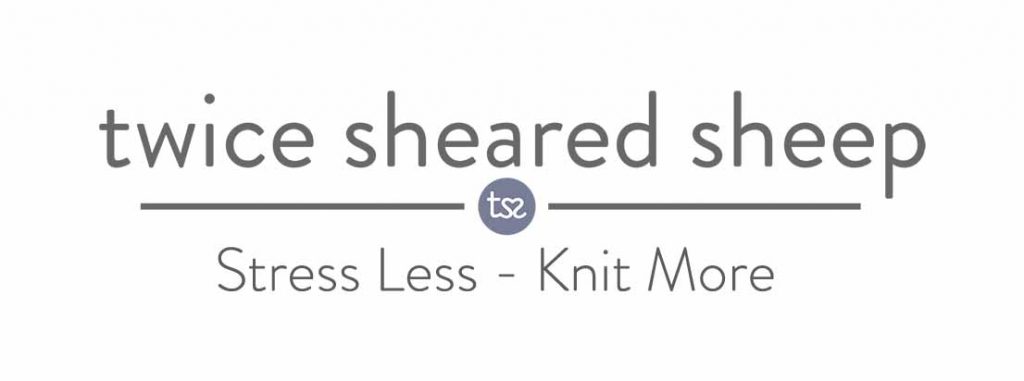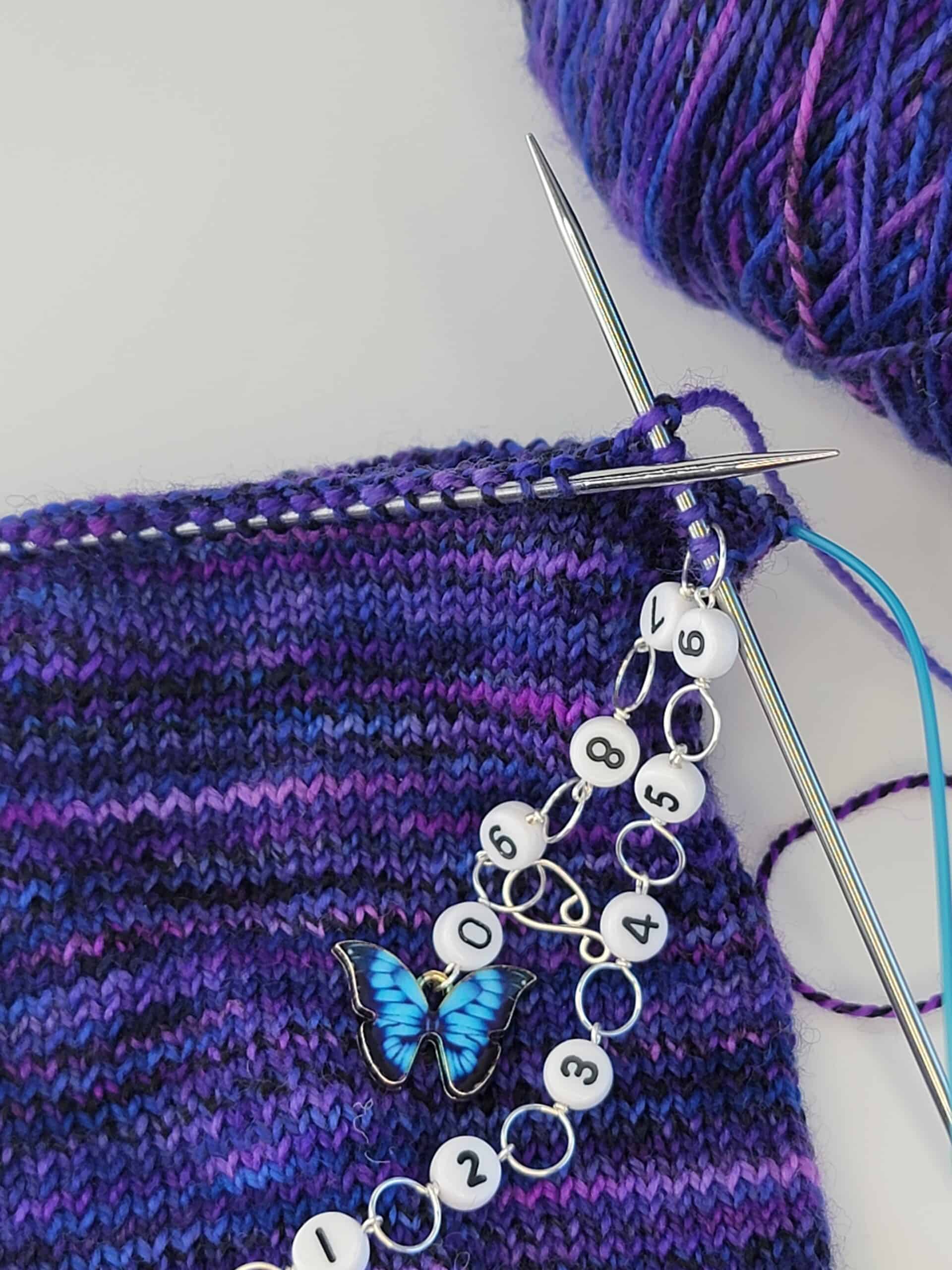We’ve had a lot of new friends join our community recently and that means we’ve had a lot of awesome new friends asking questions about our row counters.
I’ve been using them for YEARS and sometimes take for granted that you don’t all just live inside my brain where all the answers live. (I mean, that would be weird. Let’s not do that.)
So today I’m answering all the questions!
Because if one person was brave enough to ask I know that there are others who are wondering the same thing.
Q: How exactly do I use a row counter?
A: Simply replace any regular stitch marker with your chain counter and start knitting!
When you come back to the row counter, move it to the next loop in the chain as you naturally pass it from needle to needle.
Once you’ve worked all the way through the chain, use the attached melody clip to mark your 10s place (ie, the 1 in 10) and start the chain again!
Q: There are only 10 loops on the chain. What do I do when I need to count more than 10 rows?
A: Every row counter comes with a little melody clip attached to the 0 loop. When you have worked your way through the chain and need to start it over again at 1, it’s time to use the melody clip!
Move that little clip to the 1 loop to designate that you have now completed the chain one time. Since the chain is 10 rows long, it also marks the 10s place in your count (i.e., the 2 in 21). Repeat this every time you finish the chain, marking the 10s place and the number of times you have completed the chain.
When you need to know what row you’re on, you can just look at your counter.
If the clip is on the 2, and the chain is on your needles on the 3 loop, then you are on row 23!
Make sense?
Q: How do I use the row counter when I knit flat?
A: Our row counters are essentially a fancy stitch marker and can replace any regular stitch marker on your needles. I like to put mine at least two stitches in on the right side (or right after the edging stitches) when I’m knitting flat.
This means that you’ll move the counter to the next number at the beginning of right side rows and won’t move it again until almost the end of wrong side rows.
It still keeps a 100% accurate count, but some people really like the reassurance of being able to move their counter at the beginning of every row.
If that’s you, then our Odd / Even row counter sets are what you’re looking for!
We’ve divided the chain up into odd rows and even rows so that you can put one chain at each end of your work. Move the chain to the next number at the beginning of every row, and slip the chain at the end of the row without changing numbers (or if you like to move at the end, reverse that).
Q: Won’t my row counter get knitted into my work and get stuck as I knit?
A: Nope! Your row counter is just a fancy stitch marker and should float along your needles between stitches just like any other stitch marker. It shouldn’t ever become permanently attached to your knitting.
The chain is dangly, though, and if you let it hang with one half on each side of your work, it can become trapped under the working thread as it passes from stitch to stitch.
To prevent this, always make sure that both sides of the chain are on the OPPOSITE side of the work from your working yarn when you pass the chain from one needle to the other (in the front of the work when knitting and in the back of the work when purling).
Q: Wow, there are a lot of Row Counter options… What’s the difference them all? I’m so confused!!
A: I completely understand! It’s kind of a lot.
Here’s the rundown so you can keep everything straight.
Original Row Counter – Our all-purpose, works-for-everything chain row counter. This counts up to 110 rounds, rows, or pattern repeats. It works for flat knitting, circular knitting, and most other forms of knitting you can think of.
Circle Row Counter – Works exactly like our original chain counter. The only difference is that we have connected the 0 and 1 together so that the chain now hangs half as long from your needles. It also allows you to start on either the 0 or the 1 loop depending on which your brain likes best.
It is absolutely a matter of personal preference on whether you will like the circle counter or the original counter better. It’s totally up to you!
Odd / Even Row Counter Set – For flat knitting.
When knitting flat with an original or circle chain counter, you move the counter at the beginning of right side rows and not again until almost the end of wrong side rows.
Some people prefer to be able to move a counter at the beginning (or end) of every row, so we created the Odd / Even Counters just for you!
We have divided the original chain counter into an odd number half and an even number half. Just place one half near the beginning of your row and the other half near the end, allowing you to move a counter every row (and make your brain happy!)
Shortie Row Counters – These little guys are designed especially for patterns with short pattern repeats where you don’t need a full chain counter.
Each counter only has loops 1-5 and is half the length of our regular counters. Meaning that there is less to hang from your needles and less to potentially get in your way. ????
Increase / Decrease Counters – These are for those special circumstances where you need to work an increase or decrease every other row (such as sock toes, or sweater darts, or asymmetrical triangle shawls). Katie is convinced that they are going to change the world.
Slip it on your needle just before where you need to work your increase (or decrease) When you come to it, check what loop you’re on (I for increase, D for decrease, K for knit). That’s what you need to do this round. Slip the counter to the next loop and do the thing that you need to do (increase, decrease, or knit). This should make sure that you increase every other row, every single time. ????
Whew! I think that’s everything.
Did I miss something? If you still have a question that I haven’t answered, just send an email! I’m always here to help. ????


